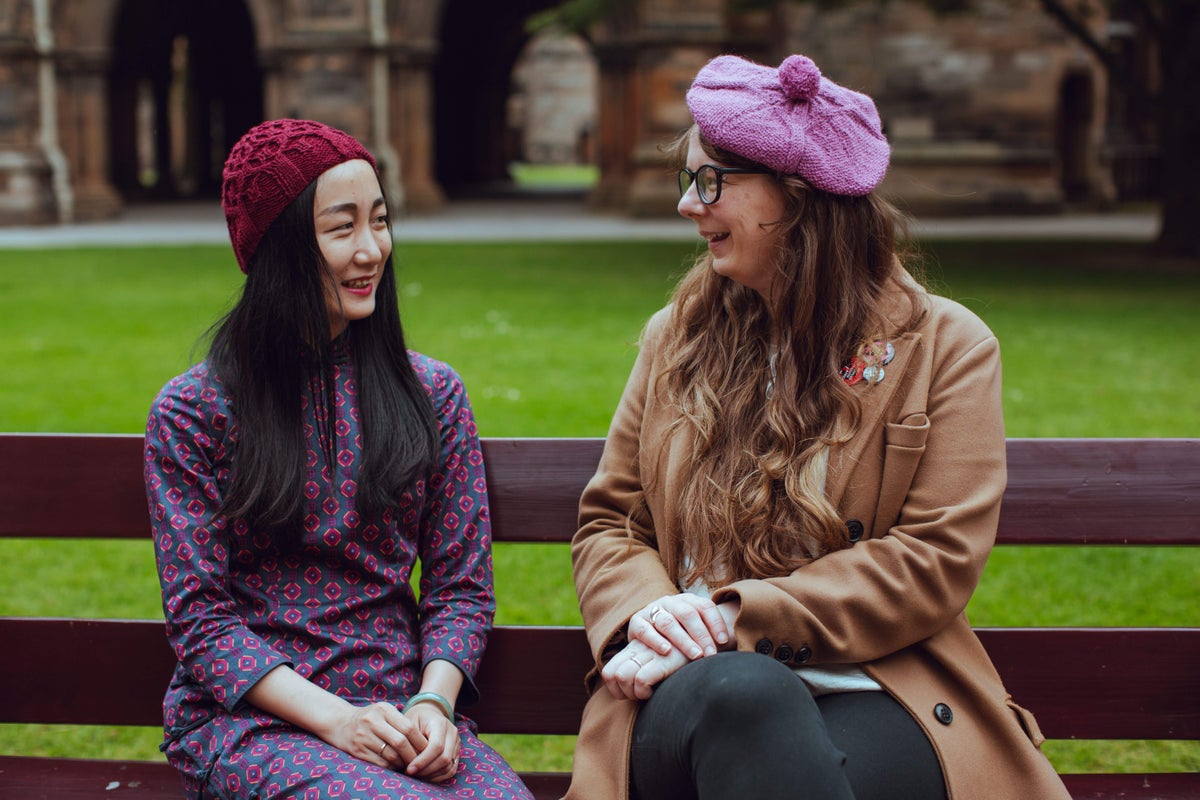
Knitters will soon be able to make tea cosies inspired by the University of Glasgow with the launch of a book of patterns based on the historic architecture.
Designers across Scotland submitted patterns based on the “iconic” cloisters on the Gilmorehill campus and the “modernism” of the library.
Crafters will also be able to knit a scarf emblazoned with the spires of the university.
The book comes after the university launched its own wool called Cochno in 2018, which was “well received” by knitters around the world.
The university has also employed a knitter in residence who helped create the patterns.
Staff and students were invited to take part in a competition to produce original knitting patterns inspired by the university, as well as being able to knit in the Cochno wool.
The book – Knitting The University Of Glasgow – was a joint venture between the university’s Professor Lynn Abrams, Professor Marina Moskowitz from the University of Wisconsin, and Christelle Le Riguer from Glasgow’s School of Humanities.
Prof Abrams said: “The genesis of this book of knitting patterns, inspired by the built environment of the University of Glasgow, lies in research carried out by historians at the University of Glasgow into the economies and cultures of hand-knitting in Scotland from the 18th century to the present.
“Scotland’s long tradition of knitwear production is rightly celebrated. It feels fitting therefore to celebrate the beauty of the University of Glasgow’s iconic buildings in knitted form.
“We hope that this book will be as well received by knitters around the world as our own branded wool – Cochno Wool – was when we launched that in 2018.”
Prof Moskowitz said: “Our aim as historians is to investigate the place and significance of hand-knitted textiles to Scotland’s economy and culture, in the past, the present, and the future.
“Studying knitting can be used to think about the role of craft in linking individual creativity to economic pursuits, local design traditions to national heritage, and domestic economies to the creative economy of Scotland. Scotland’s rich heritage of hand-knitted textiles contributes to other national industries, such as tourism and fashion.”
Ms Le Riguer said: “We hope this book will make its own contribution to help increase public understanding of the ways in which knitting enhances health and wellbeing and cultural enrichment.
“We also hope the patterns will inspire people to visit the University of Glasgow and to knit your own little bit of the university.”







